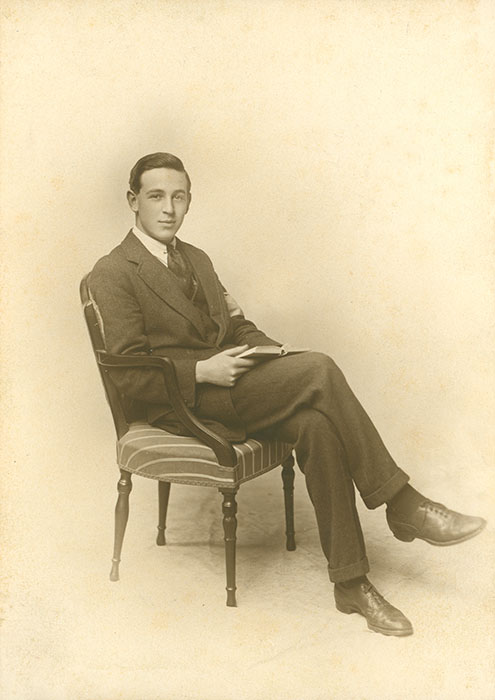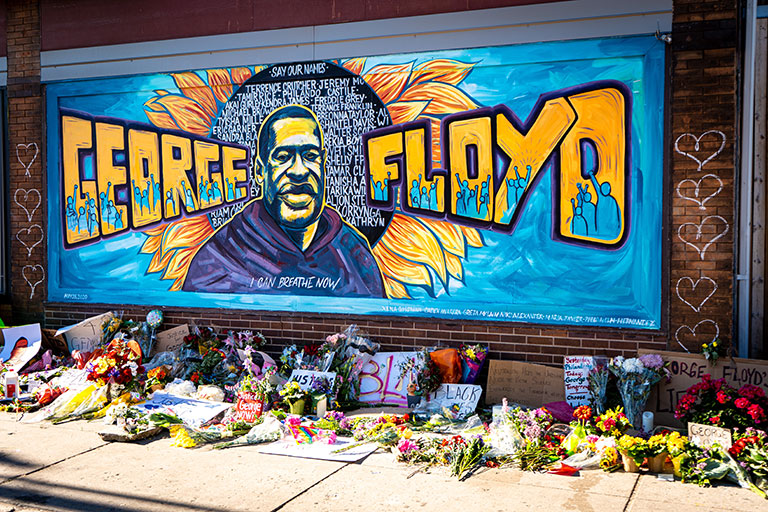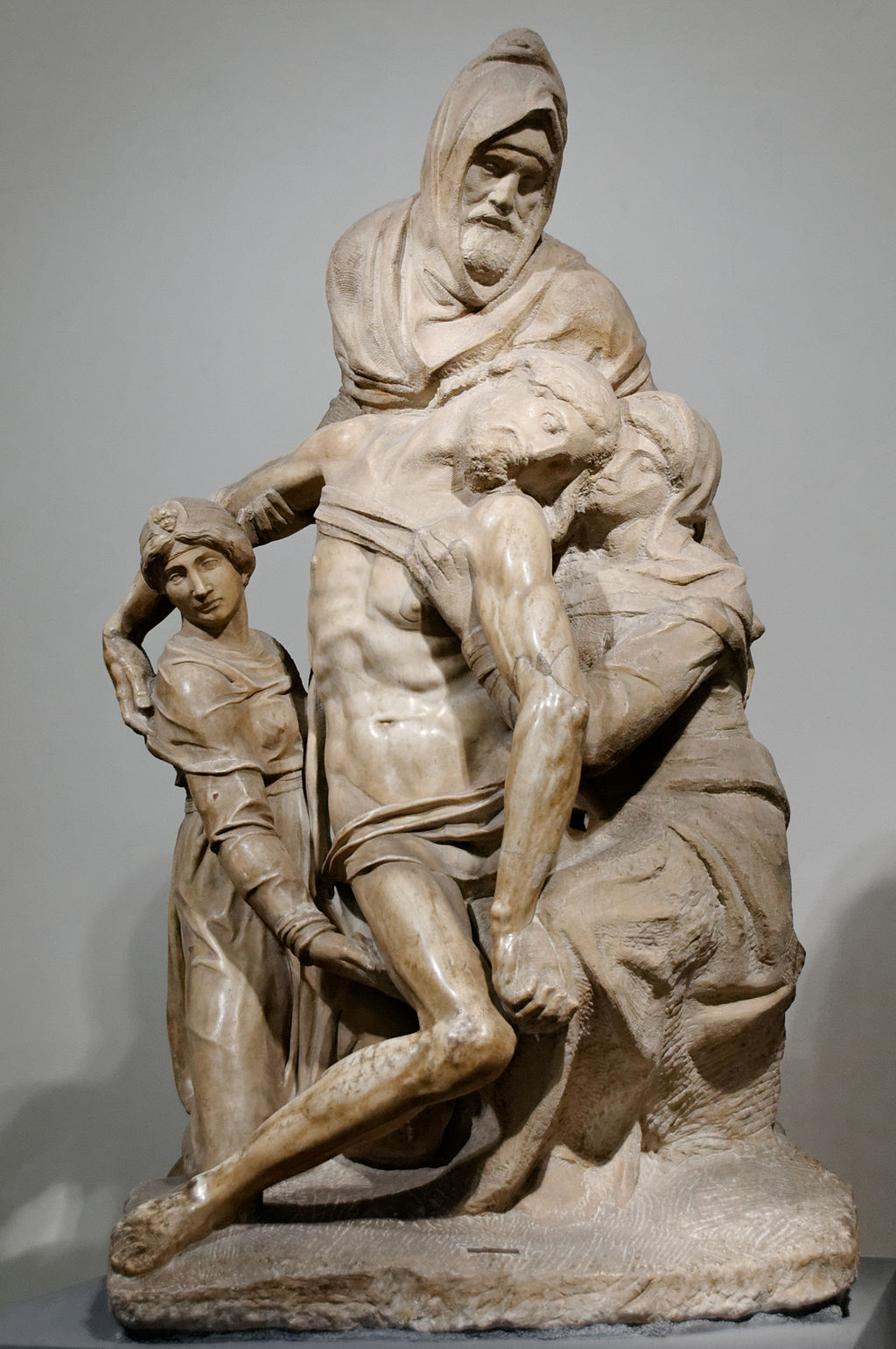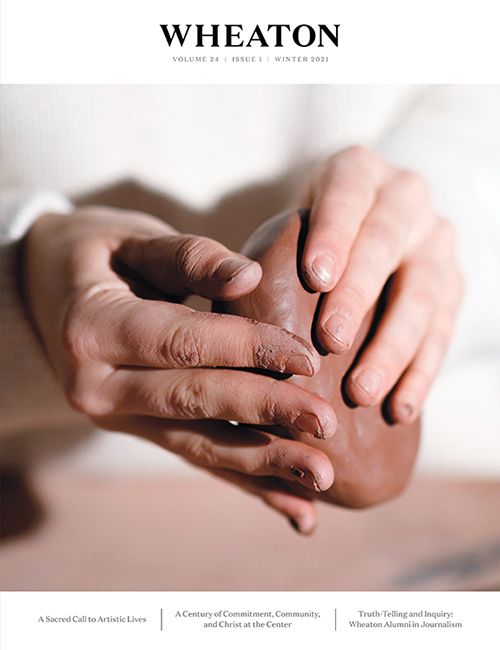Art in Pandemic-Time
Turning to the Arts in the Midst of Suffering
Words: Dr. David W. McNutt, Associate Professor of Core Studies
What is the good life? What is my vocational calling? What is the value of a Christian liberal arts education? What is love?
These are the kinds of questions that I have the privilege of discussing with new students in the First-Year Seminar class that I teach as part of Wheaton College’s Christ at the Core curriculum. For students who are still finding their way around campus, making new friends, and figuring out how to live on their own for the first time—all while social distancing and wearing masks these days—there is a lot to take in. But the seminar is also a fantastic introduction to their Wheaton education.
Placid Occupations
One of the texts that all new students read for this class is an essay by C. S. Lewis, “Learning in War-Time.” It was originally a sermon he preached on October 22, 1939, at St. Mary the Virgin Church in Oxford shortly after the start of World War II. Lewis asks why anyone should bother with studying while a war is raging.

C. S. Lewis (ca. 1918)
Used by permission of the Marion E. Wade Center, Wheaton
“[T]his seems to be an odd thing to do during a great war. What is the use of beginning a task which we have so little chance of finishing? . . . [W]hy should we—indeed how can we—continue to take an interest in these placid occupations when the lives of our friends and the liberties of Europe are in the balance?”
Lewis knew what he was talking about. His own studies at Oxford had been interrupted by his military service during World War I. Just over one week after arriving at Oxford, he enlisted in the officers’ training corps. After deployment to France, he finally arrived at the front lines in the Somme Valley. It was his 19th birthday.
Years later, in his sermon, Lewis—in typical fashion—turned the question on its head. The question, he said, isn’t why one should study in the shadow of war, but why one should study at all during any time since we live in the shadow of eternity. Every student must ask “how it is right, or even psychologically possible, for creatures who are every moment advancing either to Heaven or to hell to spend any fraction of the little time allowed them in this world on such comparative trivialities as literature or art, mathematics or biology.” In that sense, he contends, the war is nothing new. Rather, it simply lays bare the situation that is always present with us, but which we usually ignore.
When my First-Year Seminar class transitioned to online learning last spring and again throughout my classes in the fall, I found myself thinking about Lewis’s essay. In particular, it forced me to ask a question about my particular field of study: theology and the arts.
In some respects, the COVID-19 pandemic has served a similar role as the war by exposing some aspects of our everyday reality. By most accounts, art is not an “essential service.” Indeed how can it be when for most of us it doesn't provide food for our families or pay the mortgage, and it can't help us find a vaccine? If Lewis asked why students should bother with studying during war-time, then we might ask: Why should anyone bother with art when faced with the realities of this world like a global pandemic, job loss during an economic crisis, and ongoing racial violence and unrest? In the midst of our suffering, is art not unmasked as just another “placid occupation”?
Art and Suffering
Another class that I taught last year was one that I developed along with Dr. Vincent Bacote, “Theology and the Arts.” During the class, which is the first of its kind at Wheaton, I help students to cultivate a theological vision for the arts by discussing both how the particular claims of the Christian faith inform our understanding of the arts and how the arts might shape our faith. Students read Scripture together in light of our theme, reflect upon theological questions, present original works of art, and take in an on-campus performance at the Arena Theater (last spring, it was The Importance of Being Earnest). We also typically visit the Art Institute of Chicago, but the virus prevented that excursion.
One of the most fruitful—and challenging—conversations was about the relationship between art and suffering. It helpfully reminds us that art is anything but placid.

George Floyd mural at the corner of 38th and S Chicago Ave in Minneapolis, MN
Photo by munshots on Unsplash
Art Exists Within Suffering
Thomas Kinkade’s bucolic and unspoiled landscapes are beloved by many. Typically featuring an idyllic cottage set beside a smoothly flowing river, they embody Kinkade’s stated artistic intention: “I like to portray a world without the fall.”
For that very reason, however, they have also been critiqued as examples of sentimental art that fail to recognize the reality of suffering. Although artists such as Kinkade would seem to suggest that art is somehow immune to the reality of sin, the truth is that, like all other aspects of human existence, art exists within the context of human suffering. Theologian and musician Jeremy Begbie contends that overly sentimental art is a serious matter, in part, because it “misrepresents reality through evading or trivializing evil.” Art that fails to recognize the truth of suffering and the presence of evil is profoundly lacking in its ability to address human suffering.
Have you ever noticed that the text about the golden calf in Exodus 32 comes almost immediately after God’s gift of artistic skills, bestowed upon Bezalel and Oholiab in Exodus 31? If the narrative of the golden calf teaches us anything, it is that artistic making does not exist apart from the realities of sin and suffering. Indeed, as creatures formed in the image of God and yet fallen, humans have the unenviable capacity to take the gifts and tasks that God has uniquely given to us—things meant for God’s glory and our good—and distort them.
Failing to contend with the reality of suffering is one such distortion.
Art Expresses Humanity’s Suffering
Existing within the reality of suffering can actually be a strength of the arts.
The 1948 Italian film Bicycle Thieves, directed by Vittorio De Sica, is a deceptively simple film. In post-war Italy, during high unemployment, Antonio receives a job offer to post advertisements, but he needs a bicycle for the job. He had pawned his Fides bicycle, so his wife, Maria, sells her dowry bedsheets to get the bicycle back. With a bounce in his step, Antonio undertakes his new job, but his good fortune soon turns to tragedy when his precious bicycle is stolen by three thieves.
-1.jpg)
A scene from Ladri di biciclette, directed by Vittorio De Sica
Wikimedia Commons
Without the help of the police, Antonio, his friends, and his young son Bruno look for the Fides bicycle—literally, looking for “faith” (fides). Antonio manages to track down the thieves, but when confronted by the surrounding community, he decides to leave. While walking home, the desperate Antonio attempts to steal an unattended bicycle, but he is quickly apprehended. In a moment of grace, the owner of the bicycle decides not to press charges against him. Antonio and Bruno disappear in the crowd.
The movie, which is often ranked among the best films of all time, may have a simple plot, but it points to a profound truth. Art has the ability to express our suffering, to reveal the depths of the human condition, to show our need. Even in black and white, Bicycle Thieves vividly depicts the social, economic, and political challenges that Antonio and his young family face. Like the rest of us, he is a broken person in need of redemption.
Many artists and philosophers maintain that the essence of art is its ability to express the emotions of the artist. For example, Leo Tolstoy wrote, “The activity of art is based on the fact that a man, receiving through his sense of hearing or sight another man’s expression of feeling, is capable of experiencing the emotion which moved the man who expressed it.” I won’t offer a comprehensive definition of art here, but if expressing one’s emotion and eliciting emotion in others is part of what defines art, then it is not just pleasure that art might convey, but also pain and suffering.
Art Points to Christ’s Redemptive Suffering
Some have suggested that art can relieve our suffering, even if only temporarily or to a degree. If you have ever found yourself escaping from the realities of life to read a book or watch a movie for a bit of relief, then perhaps you’d agree with Arthur Schopenhauer, the 19th-century German philosopher. Schopenhauer, who viewed all of life as suffering brought on by our constant willing, was deeply pessimistic. However, he maintained that our contemplation of art “suddenly raises us out of the endless stream of willing,” thereby bringing us relief.
Of course, such relief is fleeting. So, where might we turn for a more lasting relief from our suffering?
For the Christian faith, the answer to that question is found only in Jesus Christ, the eternal Son of God who took on flesh, died upon a cross, rose again, and ascended to the Father. At its best, then, art points to God’s response to our suffering in the person and work of Christ.

The Deposition or Pietà Bandini by Michelangelo
Marie-Lan Nguyen, Wikimedia Commons
Michelangelo’s Pietà, one of his best-known works, was sculpted when the artist was in his early 20s. Less known but, in my view, even more compelling is his The Deposition, crafted some fifty years later, when the artist was in his 70s. Both works testify to the truth of the suffering and death of Christ, which we must declare before and alongside affirming his resurrection: “You . . . put him to death by nailing him to the cross. But God raised him from the dead” (Acts 2:23-24 NIV).
But, some might ask, why do we need art to understand the message of Scripture? Can’t the truth of the gospel be expressed better in theological treatises?
In an essay entitled “Why We Need Artists,” pastor Tim Keller points to the incredible benefit that artists bring to the community of faith: “The Church needs artists to assist the body in understanding truth, but just as importantly the Church needs artists to equip the Church to praise God.” Similarly, in his “Letter to Artists” on Easter Sunday in 1999, Pope John Paul II noted, “In order to communicate the message entrusted to her by Christ, the Church needs art. Art must make perceptible, and as far as possible attractive, the world of the spirit, of the invisible, of God. It must therefore translate into meaningful terms that which is in itself ineffable.”
From these two quite different Christian voices, we might discern that we need art and artists not because we cannot understand the words of Scripture and not because theological works cannot describe the content of our faith, but because we cannot exhaust the meaning of Scripture, because through paint, sound, camera, and a whole range of artistic media, art helps us to “grasp how wide and long and high and deep is the love of Christ” (Eph. 3:18). Indeed, the task of the theologian and the task of the artist are perhaps not so dissimilar as they might seem at first: In their chosen medium, both seek to describe the indescribable, to depict that which cannot be depicted, and to comprehend that which is beyond comprehension.
Art Anticipates the End of Our Suffering
In the wake of the death of George Floyd, alongside protests and calls for justice, there have been many artistic tributes. Among them is a wall mural at the corner of 38th Street and Chicago Avenue South in Minneapolis, where Floyd was arrested. Beneath an image of Floyd and the names of other African Americans who have been killed by the police, community artists included the phrase, “I Can Breathe Now.”
Art cannot achieve our reconciliation with God and our redemption through Christ, but it can look forward to that which is to come with hopeful anticipation. For although we suffer in the present, art might give us a glimpse of the Spirit-filled new creation for which we wait (Rom. 8:18-25).
According to Plato’s vision of the ideal city in The Republic, each person fulfills their purpose by performing a socially beneficial task. At the pinnacle of that hierarchy stand the philosopher-kings, whose rule is guided by their rational thought and their love of wisdom. With that in mind, Plato declares that poets and artists should not be permitted in the city because they are inherently deceitful, tending to mislead and corrupt people.
Contrast that with John’s vision of the heavenly city.
I saw no temple in the city, for its temple is the Lord God the Almighty and the Lamb. And the city has no need of sun or moon to shine on it, for the glory of God is its light, and its lamp is the Lamb. The nations will walk by its light, and the kings of the earth will bring their glory into it. Its gates will never be shut by day—and there will be no night there. People will bring into it the glory and the honor of the nations (Rev. 21:22-26).
Perhaps humanity’s artistic expressions will be part of our eternal praise of God. In the meantime, artistic expressions here and now may be hopeful anticipations, not because they disregard our suffering but rather because they provide witness to God’s response to our suffering in Christ. In that light, former Wheaton professor and art historian John Walford calls for art that refuses to ignore our suffering, embodying “a broken beauty.” Such art, he contends, “is not only true to the human condition, but it can embody the essence of the gospel of redemption.”
Artistic Habits
Like everyone else, our family has had to adjust to the realities of life under COVID-19, which has brought new rhythms and challenges to our family and work life. But we’ve also tried to emphasize life-giving habits, including family devotionals, bike rides, and walks at the Morton Arboretum.
.jpg)
Yo-Yo Ma
Copyright World Economic Forum, swiss-image.ch/Photo by Andy Mettler
Among the habits that our family has developed during the pandemic are what I’ve called “moments with art.” My favorites have included listening to Yo-Yo Ma’s performance of the prelude to Bach’s Cello Suite No. 1 in G Major, taking an online tour of the Van Gogh Museum, listening to a reading of Dr. Seuss’s Fox in Socks set to Dr. Dre’s music, and watching Terrence Malick’s brilliant film, A Hidden Life.
These engagements with the arts have reminded us—yes, even in the midst of a global pandemic, economic hardship, and a fractured social order—of the presence and faithfulness of the living God, who does not ignore our suffering, but who entered into this world to redeem us.
David W. McNutt (Ph.D., University of Cambridge) is Associate Professor of Core Studies at Wheaton College, an Associate Editor at IVP Academic, and an ordained minister in the Presbyterian Church (USA).
